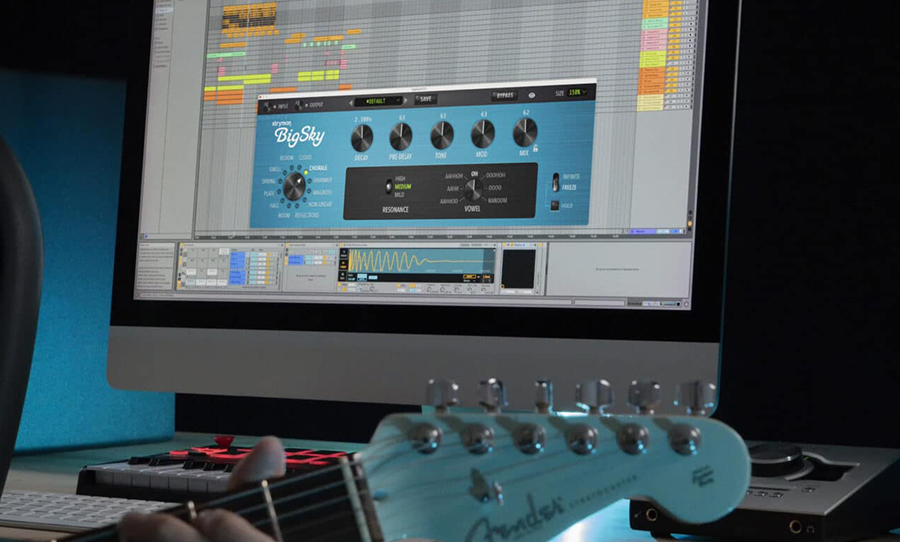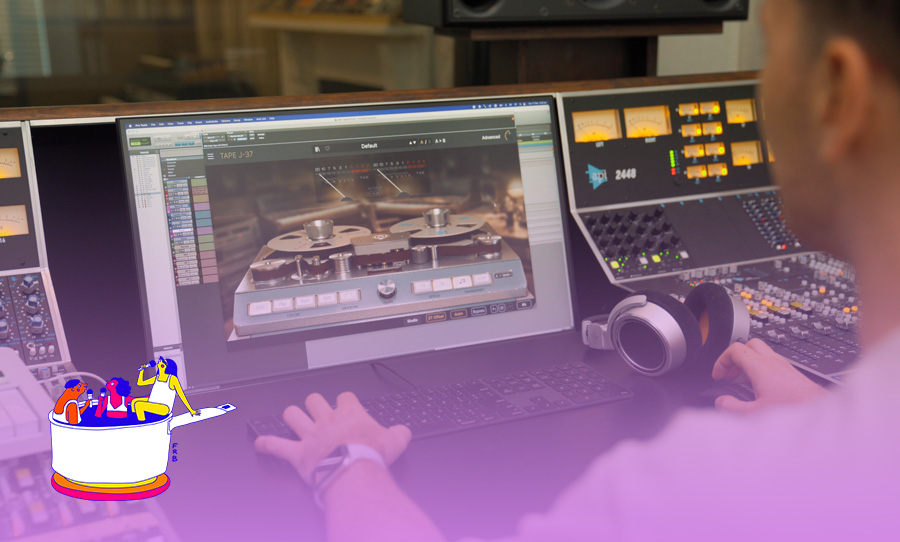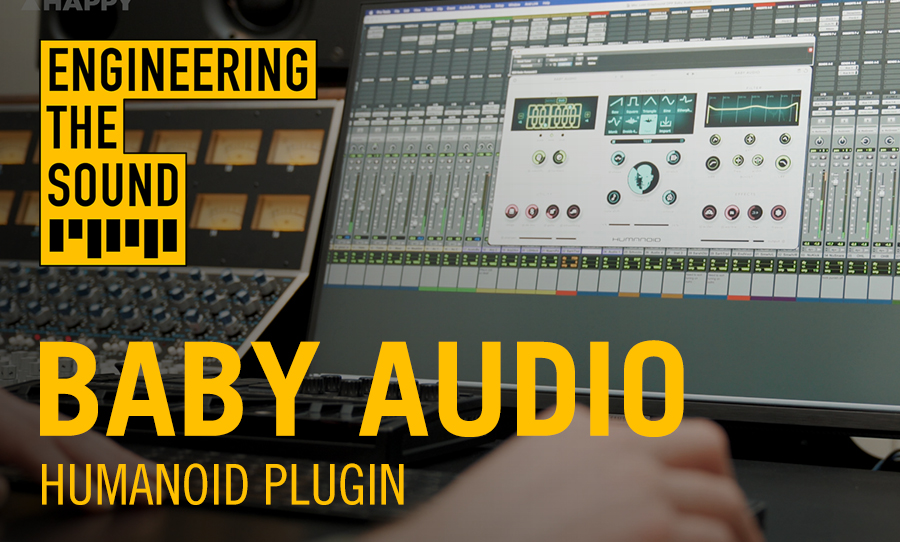Makers of your favourite pedals Strymon has made a plugin for the first time with their BigSky Reverb Plugin: a software recreation of their best-selling pedal. We tested it out.
Is this a sign of the times? Iconic pieces of gear that are revered across communities of studio and stage are turning into plugins straight to your DAW. Will you forget the ‘analog’ pedal board and stomp on a laptop on stage instead? Have you been holding off buying an effect pedal for the studio only to realise emulations are being made?
Well, the answer to one question is here — the Strymon BigSky Reverb Plugin. The BigSky is that blue pedal you see on someone’s pedal board after you go up to compliment them on their incredible reverb sound, and now you don’t have to drop $700+ AUD on the pedal to get that same tone. You can have it in your comp, and you can have as many as you like — CPU permitting.
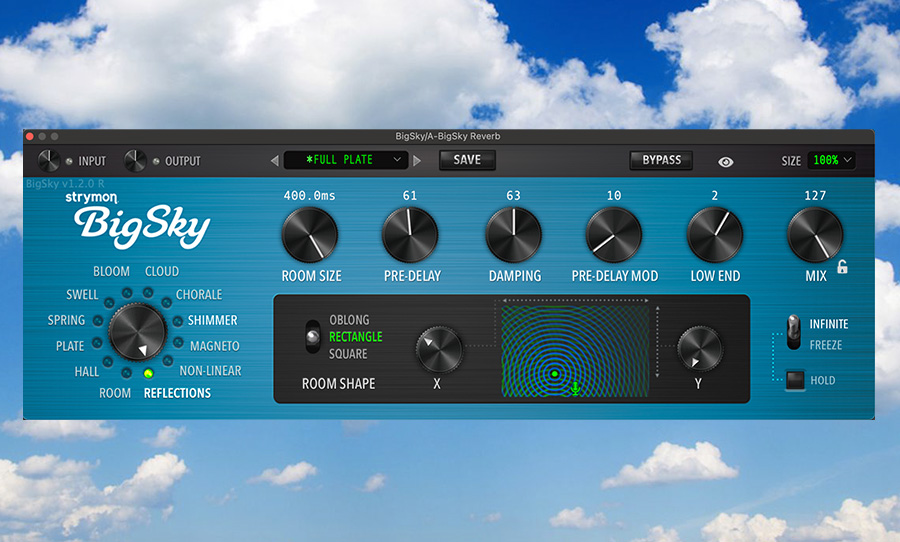
Strymon is a company that guitarists adore. Not being the most affordable pedals, they attract those who are serious about their tone. Starting out called Damage Control in 2004, founders Gregg Stock (who’s an analog engineer) and Lucian Tu (industrial designer) wanted to build uncompromising products that pushed the limits of technology in music. In 2009 they began developing products under the Strymon name, and have been growing ever since.
Because I could, I used the BigSky Reverb Plugin across three real-life situations: on a GForce SEM Soft Synth, on a lead vocal from Jonti and as a mix reverb of Odette from our Live from Happy sessions.
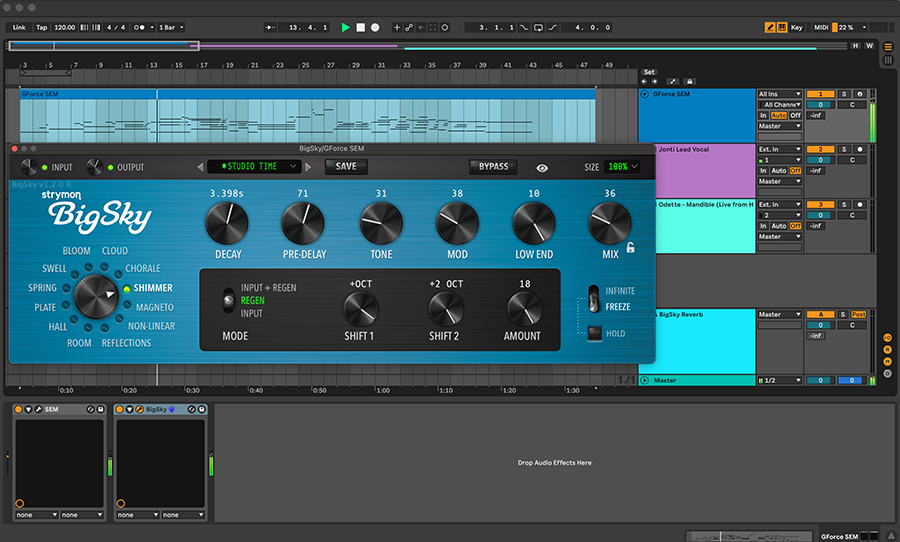
Turning off all the FX on the synth, and loading up a fairly straightforward buzzy synth sound I go to it. Seems stupid, but my first stop: change the window size. Easy — top right corner allows 4 different sizes. Although, I do really prefer that drag the window size. Next stop, the Shimmer setting. I was pleased you can click on the name, rather than having to ‘grab’ the knob and turn it.
Shimmer extended the synth in the most enjoyable way, and I tweaked the Decay and Pre-Delay to create a layer that didn’t sound like it was created from the original synth. I can only imagine that I would use on an organic instrument like a piano or guitar in a dreamy alt-pop production to set an ethereal mood.
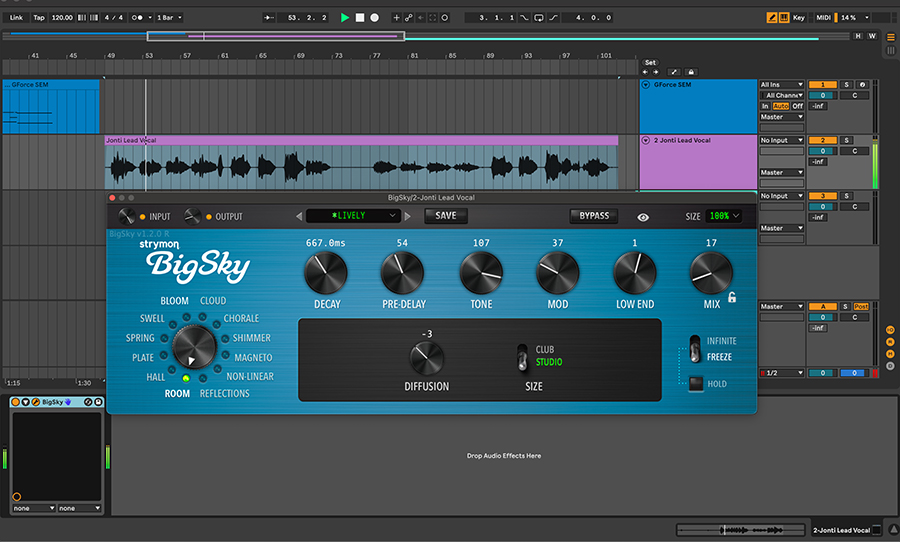
Moving onto Jonti’s vocal, I threw the plugin on the track (I’ll let the audio boffins complain here) and aimed for a roomy vocal. Using those Mix and Pre Delay knobs, I was able to keep the vocal front and centre while giving his vocal some space. To my ears, it was natural and clear. That kind of stunning clear ambience. This treatment would suit musicians who hate the sound of reverb — they’re out there! Giving the vocal space without saying, “Look mum, I’m using reverb!”
Wanting to go completely in another direction, I turned down the Output (-36dB) and cranked that Input (+36dB). Hell yes, welcome to an interesting distortion of that beautiful reverb – something no creatively named preset would start you off with. Here’s my secret tip for you: Distort the Input for character. Can do this with the hardware pedal? You’ll get a gold star if you write in and tell me you can!
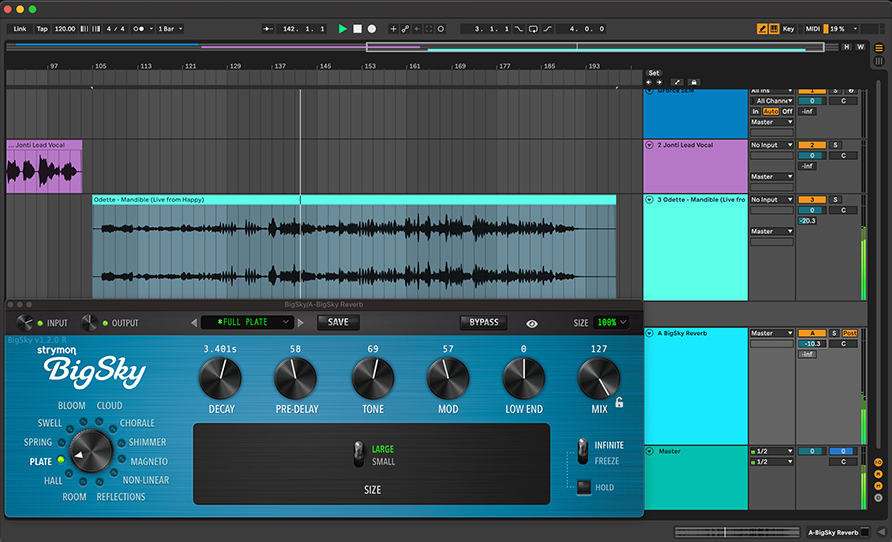
Moving onto using this as ‘Mix reverb’, I loaded up the BigSky Reverb as a send on Odette’s Mandible (Live from Happy). What’s good on solo piano and vocal? Plate Reverb. Stunning. I’m overloaded with Plate reverb emulations — aside from also having access to the real EMT Plate — so I would not be easily convinced. A gentle send to the reverb gave this already amazing performance space and length. Some tweaking on the tone, Low End and Mod got me to a point where I could just hear the reverb without being distracted.
I will confess, I have not played with the BigSky pedal, but I can tell you — I could not believe I was using the same plugin across all three sources. The reverb tones between the three musical situations were wildly different, and this is now my new favourite reverb. It’s affordable too.
It fills me with confidence (and joy!) when an emulation exists that’s approved by the company itself — we’ve looked at the Korg-approved Arturia plugin and the Tom Oberheim-approved GForce SEM plugin — and this BigSky Reverb Plugin brings the exact sound of the pedal to your DAW. It’s also curious to me if they just might start a trend here and recreate a few fan favourites…
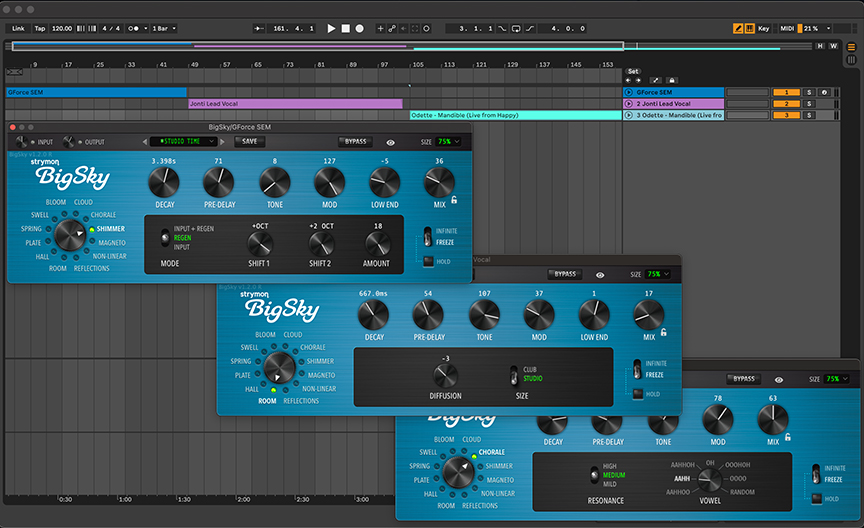
Gregg Stock, Strymon co-founder and CEO said:
“Writing the original BigSky algorithms in C really paid off because we could port the code directly, ensuring that the plugin sounds the same as the hardware”.
With 12 custom reverb algorithms — Room, Hall, Plate, Spring, Swell, Bloom, Cloud, Chorale, Shimmer, Magneto, Nonlinear, Reflections — Infinite hold/Freeze functions, and presets galore you’ll find yourself strapping this across your music too. And I noticed CPU never got too crazy with 3 instances of the plugin open, that’s a plus!
The new BigSky Reverb plugin comes in AAX, AU and VST3 formats, and is available directly from Strymon.net for $199 US.
